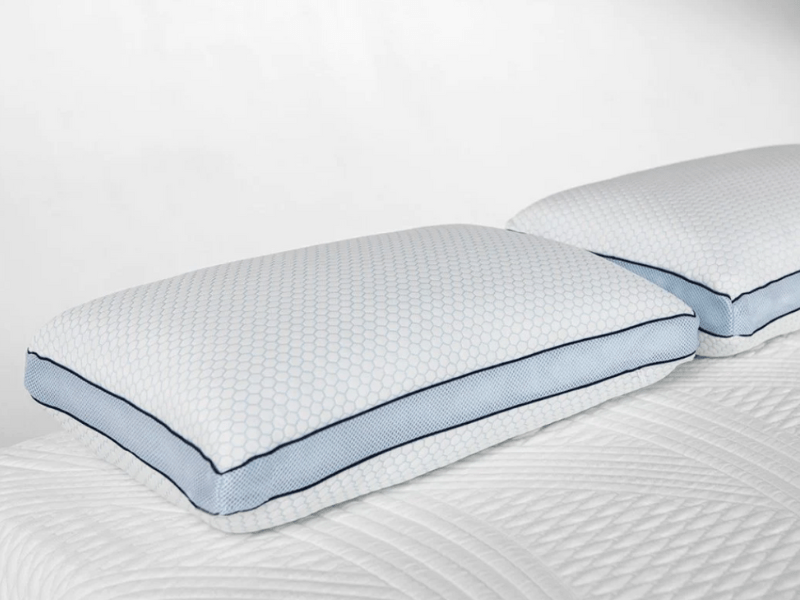Are you a shift worker struggling to cope with sleep challenges? Shift work can significantly disrupt your circadian rhythm, leading to the prevalent condition known as Shift Work Sleep Disorder (SWSD).
This article offers practical and actionable strategies tailored for individuals like you, aiming at improving sleep quality and rectifying disrupted routines. Dive in, overcome your night shift dilemma and reclaim your sleep health!
Understanding Shift Work Sleep Disorder (SWSD)
Shift Work Sleep Disorder (SWSD) is a sleep disorder that affects individuals who work irregular or night shifts, causing difficulties in maintaining proper sleep patterns.
Definition and Prevalence
Shift Work Sleep Disorder (SWSD) is a real problem. It hurts people who work when everyone else sleeps. They find it hard to fall asleep or stay asleep. These sleep issues happen at the wrong times.
This disorder touches those with schedules that mess up their body’s natural rhythm. Many shift workers face this hard truth daily as they deal with insomnia and other sleep disorders due to SWSD.
Symptoms and Causes
We will now focus on shift work sleep disorder (SWSD) and its causes. Often, people who work non-traditional hours have this issue.
- The main cause of SWSD is a mismatch between work times and your body's natural sleep-wake cycle. This is also known as the circadian rhythm.
- Night shifts or rotating shifts often lead to SWSD. These odd hours mess up your normal sleep time.
- A tough part of SWSD is trouble falling asleep. Many shift workers toss and turn in bed.
- It can be hard for shift workers to stay asleep too. They might wake up often during the day.
- Feeling sleepy when you want to stay awake is a big sign of SWSD.
- Drowsiness at the wrong time can make it hard for shift workers to do their job well.
- Some people with SWSD do not feel rested after they sleep.
- Insomnia, where you can't get enough sleep, may show up for people working different shifts.
Managing Shift Work Sleep Disorder
Treatment options for managing Shift Work Sleep Disorder (SWSD) include lifestyle changes, light therapy, and in the short term, medication.
Treatment options
Shift workers can use many ways to manage sleep problems. First, they can take drugs that help them sleep on a short-term basis. These drugs make shift workers feel less tired and more awake. Second, bright light therapy can make them feel awake when they need to be. Third, shift workers can go for regular check-ups at the doctor's office. This will help doctors keep an eye on their health. Fourth, shift workers should learn how to handle stress and stay calm in all situations. It helps them sleep better. Lastly, setting a sleep schedule that fits their work hours is critical for managing sleep problems among shift workers.
Prevention strategies
Shift workers can take proactive steps to prevent and manage sleep challenges. Here are some prevention strategies to consider:
- Establish a consistent sleep schedule: Maintain a regular bedtime routine, even on days off. This helps regulate your body's internal clock, making it easier to fall asleep and wake up.
- Create a sleep-friendly environment: Make your bedroom cool, dark, and quiet. Use blackout curtains or an eye mask to block out sunlight, earplugs or white noise machines to mask background noise, and a comfortable mattress and pillows for optimal comfort.
- Practice good sleep hygiene: Avoid stimulants like caffeine and nicotine close to bedtime as they can interfere with sleep quality. Wind down before bed by engaging in relaxing activities like reading or taking a warm bath.
- Prioritize self-care: Incorporate stress management techniques such as exercise, meditation, or deep breathing exercises into your daily routine. Taking care of your mental and physical well-being helps promote better sleep.
- Limit exposure to bright light: Before going to bed, minimize exposure to bright screens from electronic devices like smartphones or laptops. The blue light emitted by these devices can suppress the production of melatonin, a hormone that regulates sleep.
- Consider using sleep aids sparingly: Consult with a healthcare professional about the appropriate use of over-the-counter sleep aids or prescription medications if needed. These should only be used under supervision and as a short-term solution.
The Impact of Shift Work on Health and Well-Being
Shift work can have a detrimental effect on both physical and mental health, leading to increased levels of occupational stress, sleep disturbance, and an elevated risk for comorbidities such as depression and anxiety.
Occupational stress and sleep disturbance
Shift work can be demanding and can have a negative impact on both our mental and physical health. The stress that comes with working irregular hours can disrupt our sleep patterns, leading to difficulties in falling asleep or staying asleep. This occupational stress and sleep disturbance can result in fatigue, decreased alertness, and poor overall well-being. Studies have shown that nurses who work night shifts are particularly prone to experiencing these effects.
It's important for shift workers to understand the potential consequences of their work schedule on their sleep and take steps to manage it effectively.
Associated comorbidities
Shift work, particularly night shifts, can increase the risk of several health conditions. A summary of these associated comorbidities is provided in the table below.
|
Comorbidity |
Description |
|---|---|
|
Heart Disease |
Shift workers are often prone to unhealthy lifestyles, leading to increased risk of heart conditions. |
|
Diabetes |
Erratic sleep patterns can disrupt the body's insulin regulation, resulting in a higher risk of developing diabetes. |
|
Obesity |
Disruption of the body's circadian rhythm can lead to weight gain and obesity. |
|
Ulcers |
Stress and irregular eating patterns associated with shift work can contribute to the development of ulcers. |
|
Depression |
Insufficient sleep and constant fatigue can negatively impact mental health, leading to depression. |
|
Accidents due to excessive daytime sleepiness |
Shift workers are at a higher risk of accidents due to decreased alertness and excessive daytime sleepiness. |
These comorbidities highlight the importance of good sleep hygiene and health management for shift workers.
Coping Strategies for Shift Workers
Shift workers can employ various coping strategies to manage sleep challenges, such as establishing a consistent sleep schedule for night work, implementing tips for better sleep, finding ways to stay awake during shifts, and developing strategies for rotating schedules.
Tips for better sleep
To improve sleep quality, try these tips:
- Take a quick nap before starting your night shift (1.5-3 hours prior) to boost overall sleep time.
- Build time for sleep into your daily schedule and maintain a consistent sleep routine, even on days off.
- Avoid jobs with long commutes and frequently rotating shifts to prevent sleep difficulties.
- Don't delay going to bed after finishing work; try to go straight to bed when you get home.
- Dedicate time for relaxation before sleep, such as taking a warm bath or practicing relaxation techniques like deep breathing.
- Create a dark and quiet sleeping environment by using blackout curtains, earplugs, or white noise machines.
- Invest in a comfortable mattress that supports your body and promotes good sleep posture.
- Limit exposure to bright lights before bedtime by using dim lighting or wearing blue light-blocking glasses.
- Avoid stimulants like caffeine and nicotine close to bedtime, as they can interfere with falling asleep.
- Establish a relaxing pre-sleep routine that signals to your body it's time for rest, such as reading a book or listening to calming music.
Setting a night work sleep schedule
Shift workers can improve their sleep quality and manage their sleep challenges by setting a night work sleep schedule. Here are some tips to help:
- Consistency is key: Stick to a consistent sleep schedule, even on days off, to regulate your body's internal clock.
- Create a restful environment: Make sure your bedroom is dark, quiet, and cool. Use blackout curtains or an eye mask to block out daylight.
- Prioritize wind-down time: Establish relaxing bedtime routines before sleep, such as taking a warm bath or reading a book.
- Limit caffeine and alcohol intake: Avoid consuming these substances close to bedtime, as they can interfere with sleep patterns.
- Stay active during the day: Engage in regular exercise to promote better sleep at night. However, avoid exercising too close to bedtime as it may make it harder to fall asleep.
- Power naps can help: If needed, take short naps of about 20 minutes before starting your shift to combat drowsiness.
- Seek light exposure: Expose yourself to natural sunlight or bright artificial light during your waking hours to help regulate your circadian rhythm.
Staying awake during shifts
Shift work can disrupt your natural sleep patterns, making it challenging to stay awake during unconventional hours. Here are some strategies to help you stay alert and focused during your shifts:
- Get enough sleep: Prioritize quality sleep by creating a dark and quiet sleep environment. Use blackout curtains or an eye mask and earplugs to block out noise.
- Establish a consistent sleep schedule: Try to go to bed and wake up at the same time every day, even on your days off. This helps regulate your body's internal clock.
- Limit caffeine intake: While caffeine can provide a temporary energy boost, excessive consumption can disrupt your sleep. Avoid consuming caffeinated beverages too close to bedtime.
- Take short power naps: If allowed, take short 20-30 minute naps during your break times. Napping can help combat fatigue and increase alertness.
- Stay active: Engage in regular physical activity throughout the day to boost energy levels and improve overall sleep quality.
- Proper nutrition: Eat nutritious meals and snacks that provide sustained energy, such as fruits, vegetables, whole grains, lean proteins, and healthy fats.
- Stay hydrated: Dehydration can contribute to fatigue. Drink plenty of water throughout your shift to stay hydrated.
Strategies for rotating shifts
- Switching between night work and rotational work can help improve sleep disturbances.
- Avoid frequently rotating shifts to make it easier to adjust to a changing schedule.
- Follow a healthy sleep schedule and establish a daily routine for night shift workers.
- Consider using sleeping pills or treatment for Shift Work Sleep Disorder to cope with sleep challenges associated with rotating shifts on a short-term basis.
Conclusion
In conclusion, coping with sleep challenges for shift workers is essential for their overall well-being. Understanding and managing shift work sleep disorder (SWSD) is crucial in improving sleep quality.
By implementing strategies such as setting a night work sleep schedule, practicing better sleep hygiene, and seeking appropriate treatment options, shift workers can mitigate the negative impact of irregular schedules on their health and functioning. Prioritizing good sleep habits is key to ensuring that shift workers can thrive both at work and in their personal lives.
FAQs
1. Why is it challenging to sleep for shift workers?
Shift workers face sleep challenges due to disruptions in their natural circadian rhythm caused by working during nighttime hours and irregular schedules.
2. How can I improve my sleep quality as a shift worker?
To improve sleep quality as a shift worker, establish a consistent sleep routine, create a dark and quiet environment, limit caffeine intake close to bedtime, and practice relaxation techniques before sleeping.
3. Can napping help with the sleep challenges faced by shift workers?
Napping can provide some relief from fatigue for shift workers; however, it's important to keep naps short (around 20-30 minutes) and schedule them strategically during non-working hours to avoid disrupting regular sleep patterns.
4. Are there any dietary changes that can help with night-shift sleep challenges?
Adopting a balanced diet that includes foods rich in tryptophan (such as turkey, milk, or bananas), avoiding heavy meals before bedtime, and staying hydrated can support better sleep for shift workers.
5. What are some additional strategies for coping with night shift-related insomnia?
Additional strategies for coping with night-shift-related insomnia include limiting exposure to bright lights before bed, using white noise or earplugs to block out noise disturbances while sleeping during the day, and keeping a consistent exercise routine outside of work hours.






















